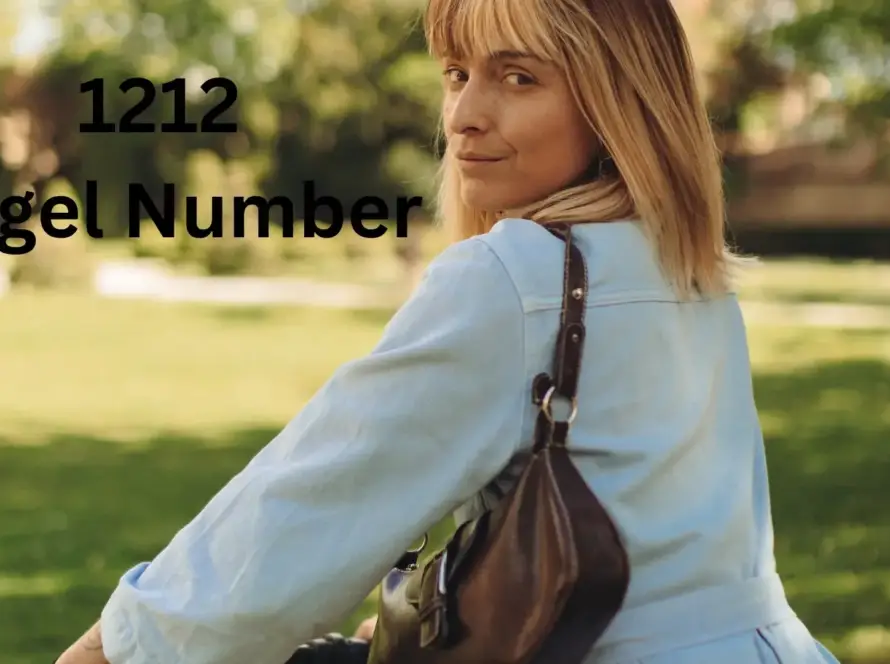
Ever heard someone say they’re panromantic and thought, “Wait, is that some new cooking technique?”
Spoiler: it’s not about frying pans or pancakes.
But stick around, and you’ll leave with a lot more than a laugh.
Let’s break it down.
Being panromantic means being romantically attracted to people, regardless of their gender.
Yep, it’s about the heart, not the gender box someone checks off.
So, if you’re vibing with a person’s soul and couldn’t care less about the packaging, you might just be panromantic.
Cool, huh?
Panromantic vs. Other Labels: So Many Labels, So Little Time!
Now, you might be thinking, “Wait, isn’t that just bisexual?”
Nope!
Let me clear that up real quick.
Being bisexual means being romantically (or sexually) attracted to two or more genders, traditionally, this was understood as male and female, but now it includes non-binary folks too.
Panromantic folks, however, take it a step further.
They’re like, “Gender? Nah, doesn’t matter to me!”
They’re open to forming romantic connections with people regardless of their gender identity.
No mental sorting system for panromantics!
So, if bisexuality is a cozy dinner at a restaurant with a menu of a few solid options, panromanticism is the surprise tasting menu: you don’t know what’s coming next, but you know it’s gonna be good.
There’s no preference based on gender, just connection, pure and simple.
And let’s not forget about demiromantic: that’s another spicy label where people only feel romantic attraction after forming a strong emotional bond.
Panromantics can be demiromantic too!
It’s all about that deep connection, regardless of gender.
But hey, no pressure to fit into just one box here.
Labels are just ways to understand yourself better, not rules to live by.
What about heteroromantic?
That’s when someone is only romantically attracted to people of a different gender than their own.
For example, a woman who’s attracted only to men. On the other hand, panromantic folks look at the whole spectrum of people and think, “Why choose?”
If that’s not enough labels for you, there’s homoromantic (attracted to the same gender) and aromantic (no romantic attraction at all).
It’s like the ultimate romance alphabet soup.
But panromantics are in their own little corner of the romance rainbow, where they’re open to loving anyone, as long as the connection is there.
It’s important to point out that panromantic doesn’t mean you’re automatically open to dating or falling in love with everyone on the planet.
Nope!
That’d be exhausting, right?
It’s more about not excluding someone based on gender.
So, while panromantics might have a wide pool of potential romantic interests, it’s still about finding someone who ticks all the other boxes: kind, funny, brings you pizza without being asked… you know, the essentials.
In the end, labels like panromantic exist to help people feel seen and understood.
It’s a way of saying, “This is how I love, and it’s awesome!”
So while there are a million ways to define attraction, panromantics just happen to be open-hearted explorers in the vast sea of romantic possibilities.
Dating as a Panromantic: Fun, Weird, or Both?
Let’s be real, dating as a panromantic can be a rollercoaster, but not the “scream your head off” kind.
It’s more like the one where you’re not quite sure where it’s going, but you know it’ll be interesting.
The beauty of being panromantic is that you don’t box people into categories based on their gender.
You’re open to connecting with anyone who sparks that special feeling, which can make the dating pool wide open… and sometimes a little weird.
But in a fun way, of course!
One of the quirks of panromantic dating is that your attraction doesn’t follow a neat script.
You might find yourself crushing on someone and realizing later, “Oh wait, what’s their gender again?”, because for panromantics, it just doesn’t matter.
It’s all about the person’s vibe, personality, and those little quirks that make you swoon.
Their gender? Secondary at best.
But then there’s the online dating world, where panromantics can have a bit of a challenge.
Most dating apps still cling to those rigid categories: “Are you looking for men, women, or both?”
Cue the awkward pause as panromantics scroll through the options thinking, “Um, where’s the ‘doesn’t matter’ box?”
Some apps are catching on, but for now, panromantic daters might find themselves clicking both or all, even though that doesn’t quite capture the experience.
It’s a fun little reminder that love is more fluid than the app designers might think.
The fun part of dating as a panromantic?
You get to focus on what really matters: the connection.
Whether someone identifies as male, female, non-binary, genderfluid, or anything in between, it doesn’t change how a panromantic person experiences romantic attraction.
You’re falling for someone’s mind, heart, and soul, not their pronouns.
It’s like seeing someone for who they really are, beyond the labels society slaps on them.
But let’s be honest: this wide-open dating world can lead to some weird moments, too.
Imagine explaining to someone that you’re not “choosing between” men or women, that you’re open to anyone and everyone, as long as there’s a connection.
Cue the confused faces and follow-up questions: “So… are you bisexual?” Or, “Does that mean you’re into me and my roommate?” (No, Dave, calm down. That’s not how it works.)
The weirdness also sometimes comes from the assumptions others make.
People might think panromantics have endless options, but in reality, it’s not about having more choices. It’s about having different criteria for attraction.
The gender of the person isn’t what pulls you in. It’s their energy, sense of humor, or the way they remember your favorite snack without being asked.
Then there’s the fun challenge of trying to explain panromanticism to someone you’re interested in.
You might get lucky, and they immediately get it.
But other times, you’ll have to do the whole “gender doesn’t play a role in who I fall for” speech, and hope they don’t confuse it with being attracted to literally everyone.
(Pro tip: you can use food metaphors. Who doesn’t love a good buffet comparison?)
On the flip side, being panromantic can be freeing in dating.
You’re not looking for specific boxes to check off. You’re just following your heart wherever it takes you.
It’s like going to a party and falling for the person who lights up the room, not caring what outfit they’re wearing or how they identify.
You get to experience a wide variety of romantic connections, and that keeps things fresh and exciting.
Ultimately, dating as a panromantic is a mix of fun, weird, and everything in between.
You’re not limited by traditional gender preferences, and that can lead to some incredibly deep and unique romantic connections.
Yes, you might run into a few raised eyebrows or awkward app profiles along the way, but it’s all part of the adventure.
After all, when love is about connection over categories, it’s bound to be an exciting (and sometimes funny) ride!

Coming Out as Panromantic: It’s a Journey, Not a Destination
Coming out as panromantic can be a journey full of twists, turns, and a few confused expressions along the way.
It’s definitely not a one-time event where you say, “Hey, I’m panromantic!” and everyone instantly gets it.
Nope, it’s more like explaining why pineapple does belong on pizza, you’ll have to do some convincing, repeat yourself a few times, and still, not everyone’s going to understand.
But that’s okay!
The first step?
Understanding it yourself.
Before you even get to the “coming out” part, there’s usually a lot of self-reflection.
Panromanticism isn’t something that always jumps out at you immediately.
Maybe you’ve noticed your romantic attractions don’t align with gender, or maybe you’re just realizing that you’re drawn to the person, regardless of whether they’re male, female, non-binary, or anything in between.
It’s kind of like finding the right word to describe a feeling you’ve had for a long time but didn’t know how to express.
When you’re ready to come out, it’s important to remember that you don’t have to rush.
There’s no pressure to announce it to everyone at once, or even at all if you don’t feel like it.
Some people start with their closest friends or a supportive family member who they know will understand.
Coming out is personal, and how you choose to do it should feel comfortable for you.
There’s no “right” way to come out as panromantic, you can write a heartfelt letter, drop it into casual conversation, or go full Instagram announcement if that’s your style!
Here’s the tricky part: panromantic isn’t a term that everyone is familiar with, so be prepared for some questions.
You might find yourself explaining it again and again, and no, not everyone will get it on the first try.
Grandma might need a little more time (and probably a cup of tea) before she fully grasps what you mean.
But the beauty of coming out as panromantic is that you get to educate people about a romantic orientation they might not have heard of.
You’re opening minds and helping others understand a more fluid way of loving.
How cool is that?
Some people might assume you’re just saying you’re bisexual, and they’ll need a little clarification.
This is where your trusty elevator pitch comes in handy: “Panromantic means I can be romantically attracted to people of any gender, not just two.”
If they still look confused, maybe throw in something like, “It’s about who they are, not their gender.”
And if they’re still confused after that, well, give them some time.
Not everyone gets it immediately, and that’s okay.
Just remember, it’s not your job to make everyone understand right away.
Coming out to romantic partners can feel a little different, though.
Some people might be surprised or have questions, especially if they’re unfamiliar with panromanticism.
The key here is to be open and honest about your identity.
You might get asked, “Does that mean you’re attracted to everyone?”
Or “How is that different from bisexual?”
These are perfect moments to clarify that being panromantic is about potential: you’re open to romantic attraction regardless of gender, but that doesn’t mean you’re attracted to every person you meet.
It’s more like you see possibilities in people based on their personality and connection, not their gender identity.
Another hurdle might be the classic, “Why do you need a label?” question.
This one’s tricky because it’s not about needing a label, but more about finding one that fits.
For panromantics, the label helps describe their unique way of experiencing love, and it can be incredibly validating.
It’s like finally having a word for something you’ve always felt but didn’t know how to explain.
So when people ask why you need a label, you can explain that it’s less about putting yourself in a box and more about feeling understood.
And let’s not forget, coming out as panromantic can be empowering.
You’re stepping into a space where you own your identity, where you’re saying, “This is who I am, and I’m proud of it.”
It’s a moment of self-acceptance that can be transformative.
Whether the people you’re coming out to understand it right away or not, you’re being true to yourself, and that’s a pretty powerful thing.
Coming out isn’t a one-and-done situation either.
You might find yourself coming out multiple times, in different ways, to different people.
There’s no finish line, just moments along the journey.
Some days it’ll feel easy, and other days it might feel a bit more challenging, but each time you’re being authentically you.
And if you ever feel overwhelmed, remember that you don’t owe anyone your story.
You get to choose who you share it with and when.
In the end, coming out as panromantic is a journey, not a destination.
It’s about being patient with yourself and others, sharing when you’re ready, and finding joy in living as your true self.
It’s not always easy, but it’s worth it.
You’re helping expand the way people see love, and that’s a pretty amazing thing to do.
Conclusion
In the end, visibility and understanding of panromantic identities matter because they help create a more inclusive, open world where love is free from labels.
The more we talk about and celebrate diverse romantic orientations, the more we break down barriers and misconceptions.
Whether you identify as panromantic or are simply learning more about it, we all benefit from understanding that love transcends gender.
Speaking of love and connection, communication is key in any relationship, panromantic or not!
Click here to get the Better Topics Card Game for Couples!
That’s where the Better Topics Card Game for Couples comes in.
This playful, interactive game is the perfect tool to spark meaningful conversations, improve communication, and bring you and your partner closer.
Whether you’re discussing deep feelings or just having a laugh, it helps keep the conversation flowing and strengthens your bond.
Why not make your relationship even more fun?
Get your hands on the Better Topics Card Game, and enjoy discovering new things about each other while staying playful and connected.
It’s a great way to enhance your communication and keep the spark alive, no matter your romantic orientation!










